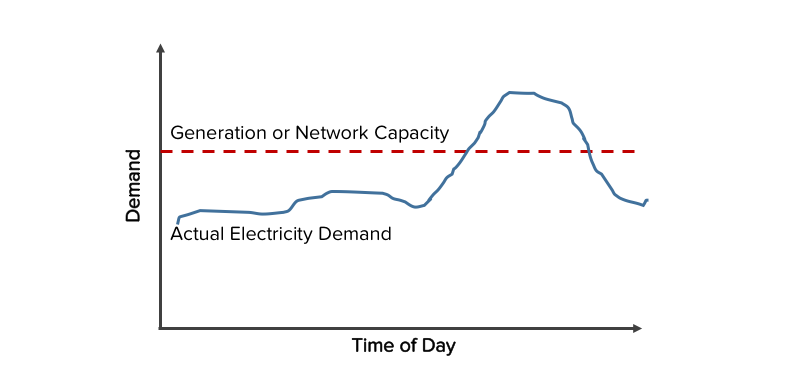In this first of a five-part series I want to focus on the meaning of key terms. I continue to have conversations where people are using demand side management, demand response, energy conservation, and energy efficiency interchangeably. They all mean different things, and while there appears to be no globally agreed definition of these terms, it is important to align your organization.
I am not suggesting the definitions I give below must replace existing definitions. You may have your own, or refer to those created by others. The definitions I describe below are simple. Anyone inside or outside the industry can understand them, and they continue to serve me well. They form the basis for my subsequent posts on building a demand response strategy.
Demand Side Management
Demand Side Management, also known as Demand Management, is an umbrella term where one party, such as Utility, works with energy consumers and prosumers to help them change the way they use electricity.
Demand Side Management typically covers areas such as energy efficiency, energy conservation, load-shifting, and demand response. More and more I am also seeing this term being used to cover programs that include distributed generation and storage.
Energy Efficiency
Energy efficiency is where you deliver the same result with less energy consumed. For example, buying a more energy efficiency washing machine means you still wash the same amount of clothes as before, the more efficient technology just uses less electricity. Insulating your house reduces the air escaping thus reducing how hard a heater or air conditioner has to work so reduces electricity consumed but you still achieve the same cooling or heating effect.
Energy Conservation
Energy conservation is where you change your behavior to reduce the electricity you consume. For example, you turn the lights off, you unplug the computer, or maybe you change the settings on the Air Conditioner. Here you are taking a course of action to conserve energy knowing the result will change. For example, if you increase the temperature of the Air Conditioner on a hot day, you will conserve energy but feel warmer.
Load Optimization
I rarely hear this, or other similar terms, used. I have included it as I believe it is the most misunderstood of the demand side family. You will hear about the need to introduce demand charges or time of use tariffs. Outside of people running power networks I this commonly gets referred to as energy conservation or demand response.
The goal is to flatten the load profile or more accurately to improve the load factor. In 2012, Ahmad Faruqui of The Brattle Group wrote a three- part series for intelligent utility, titled Dynamic pricing: the facts are in. I would encourage anyone interested in demand side management to read this series.
The objective is to get energy consumers to change behavior every day. Either reducing their daily peak demand, increasing their daily off-peak demand, or both with the aim of flattening their load profile.
Demand Response
Demand response is where a third party, such as a Utility, has a need for a consumer to reduce their electricity during a specified period, usually just a few hours a year. As this five-part series is about Demand Response, I explain why a third party, such as a Utility, may want to run a demand response program in a future post.
Within the field of Demand Response, there are some terms I also feel are worth noting.
Peak Load Reduction
Peak load reduction is where the energy consumer reduces the amount of electricity they use during a defined period. They do not shift the activity to another period. For example, they turn all the power off in their home and go out for dinner. The reduce the electricity they would have usually consumed during that time.
Pre-cooling/heating
Pre-cooling / heating is where the energy consumer uses a lot more electricity than typical, just before a demand response event. The consumer does this so they can reduce energy during the demand response event and minimize any impact to their comfort
Peak Load Shifting
Peak load shifting is where the energy consumer will still perform the activity they had planned but move it outside the demand response period. For example, if a demand response event was running between 7 pm and 9 pm, you may bring forward the wash load you were planning to do at 8 pm to 6 pm.
Building your demand response strategy
I hope you can now appreciate the importance of aligning your organization around precise definitions before you develop a demand response strategy. In the coming weeks, I will mention peak time rebates and critical peak pricing, but not time-of-use pricing. I will talk about deferral of investment in generation, transmission, and network infrastructure, but not about optimizing the efficiency of the network operations. A Demand Side Management strategy would encompass all of these, but a Demand Response strategy does not. A Demand Response strategy serves a very specific purpose, and that is what I will be talking about in the coming weeks.
